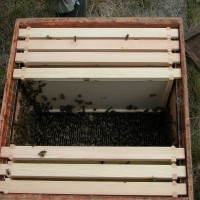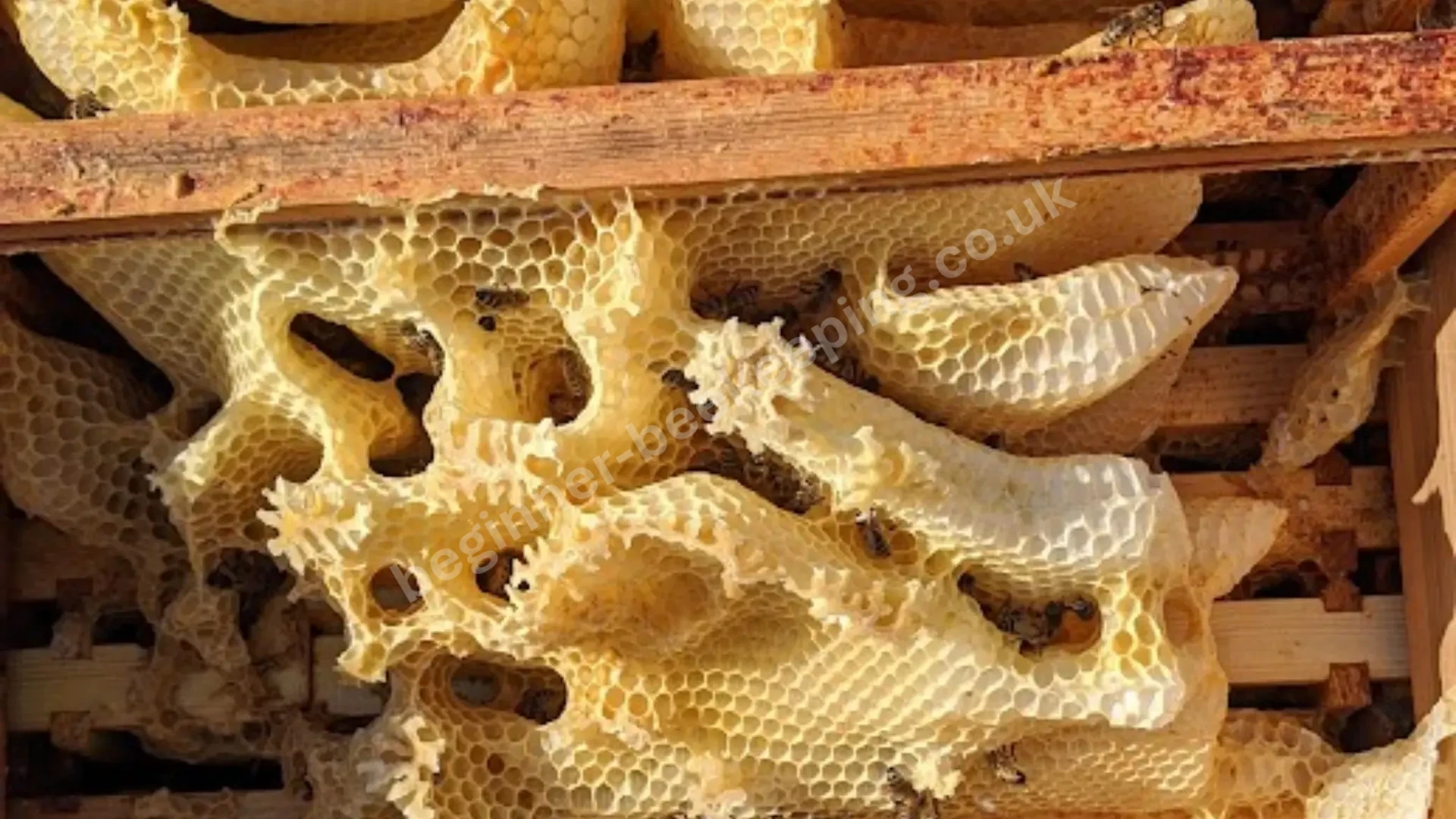
The shook swarm, also known as the shakedown method, is a straightforward and highly effective beekeeping technique. It is mainly used to move a colony onto fresh comb or foundation, helping separate the bees from harmful pathogens, lingering disease spores, or residues of past treatments. While a Bailey Comb Change may sometimes be preferred, shook swarming has become a standard method for dealing with colonies affected by European Foulbrood (EFB) and heavily infested with varroa.
This method can also be applied when adjusting bees to a different frame size – either enlarging or reducing it – depending on the beekeeper’s management goals.
Preparation and Equipment
For disease control, always use a new or freshly sterilised hive with a full set of clean frames and foundation. Starter strips may be used if cell size regression is the aim.
| Fresh brood chamber | Full set of frames with foundation |
| Floor with entrance block | Spare queen excluder |
| Crown board (inner cover) | Rapid or hive top feeder |
| Sugar syrup feed | Container for old combs |
If reusing equipment, ensure it is sterilised or scorched to minimise disease risk.
Best Timing
In the UK, shook swarming is most successful between April and July. Operations performed too late in the season can result in failures, as noted in field trials by the Central Science Laboratory (now FERA).
Shook Swarm for Disease Control
Before the ban on use of Antibiotics in the UK to tackle European Foulbrood, the National Bee Unit tested shook swarming extensively. EFB is a notifiable disease under the Bee Diseases Control Order 1982. If infection is suspected, always contact your local Bee Inspector or the National Bee Unit. Do not attempt to treat the disease yourself.
This method is also valuable in colonies suffering from heavy varroa infestations. By transferring bees onto clean foundation and removing contaminated brood comb, the mite population is drastically reduced, giving the colony a much better chance of recovery when combined with approved varroa treatments.
Step-by-Step: How to Perform a Shook Swarm
- Move the hive to one side, about a metre from its stand.
- Place a clean floor with entrance block on the original site.
- Add a queen excluder on the floor (used as a queen includer).
- Position the fresh brood box with frames and foundation on top.
- Remove a few central frames to create a darker space for shaking bees.
- Dismantle the old hive carefully.
- Locate the queen and place her in the new brood chamber, or cage her temporarily to avoid loss or injury.
- One by one, shake bees from each brood frame diagonally into the new brood box.
- Place old, bee-free combs into a container. Burn diseased combs or melt them for wax recovery.
- Continue until all frames are cleared and bees are transferred.
- Return the spare frames to the brood box.
- If caged, release the queen into the new colony.
Managing Supers During the Process
If supers were present on the original hive:
- For cell size changes: return supers once the new brood combs are fully drawn.
- For frame type changes: return supers once the new brood combs are fully drawn.
- For disease control: extract honey and then render comb.
Additional Tips
A shook swarm works best when the colony has a young, productive queen. It is not recommended for small colonies. Some beekeepers prefer clipping the queen instead of using a queen excluder beneath the brood box, as excluders can trap drones and dislodge pollen from workers.
Ensure a good supply of nectar or sugar syrup is available until comb is drawn. When treating for EFB (under the NBU inspector’s guidance), avoid feeding for 2 – 3 days to prevent bees from storing contaminated honey. Seek NBU inspector guidance for timing.
If using a contact feeder, place an empty super above the crown board for extra space. Inserting a queen excluder between the brood box and floor prevents absconding, but it should be removed once comb building begins and eggs are laid. Alternatively, delay queen release by using marshmallow or queen candy.
Some sources say that there is success by keeping shook swarms (and swarms) cool and feed-free for 1 to 3 days before moving them into position and starting to feed. This technique would to be particularly effective against EFB (under the guidance of the NBU).
